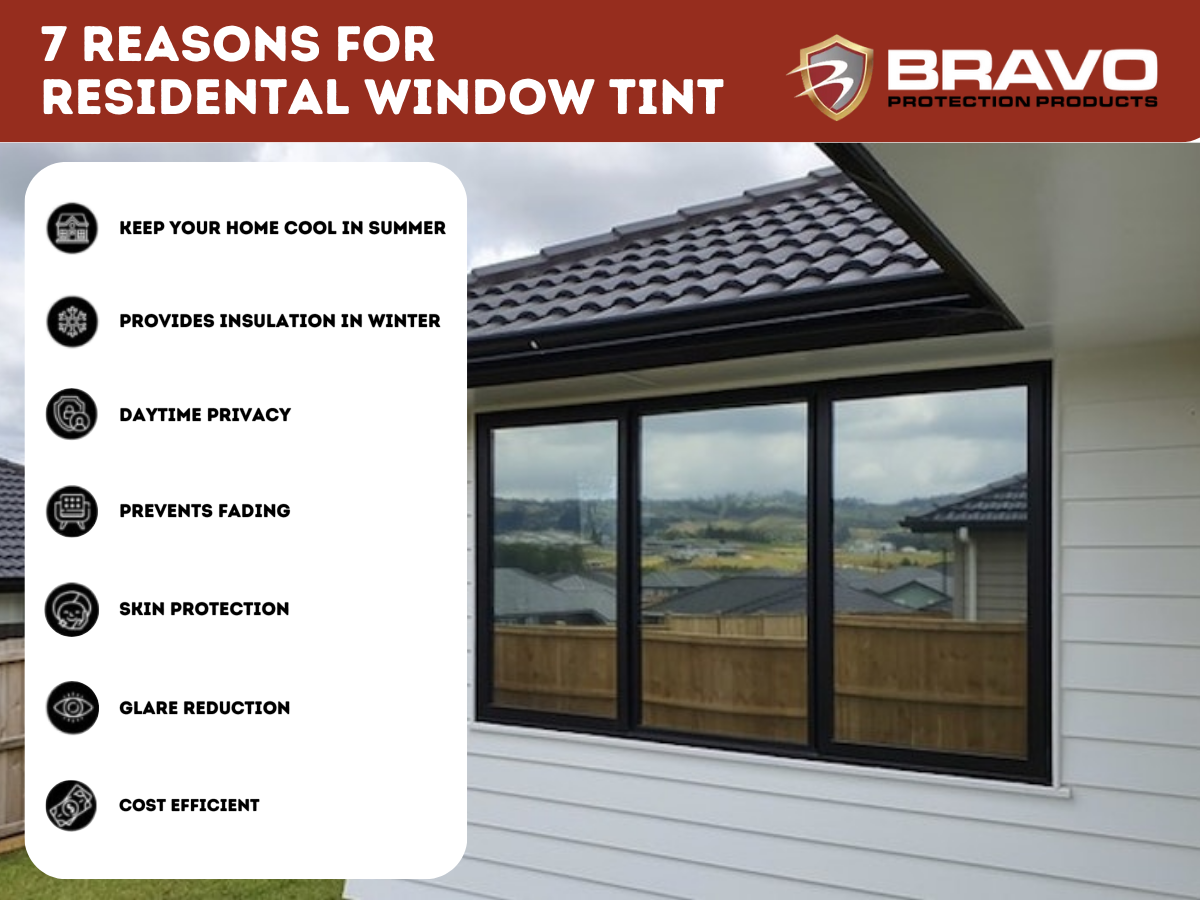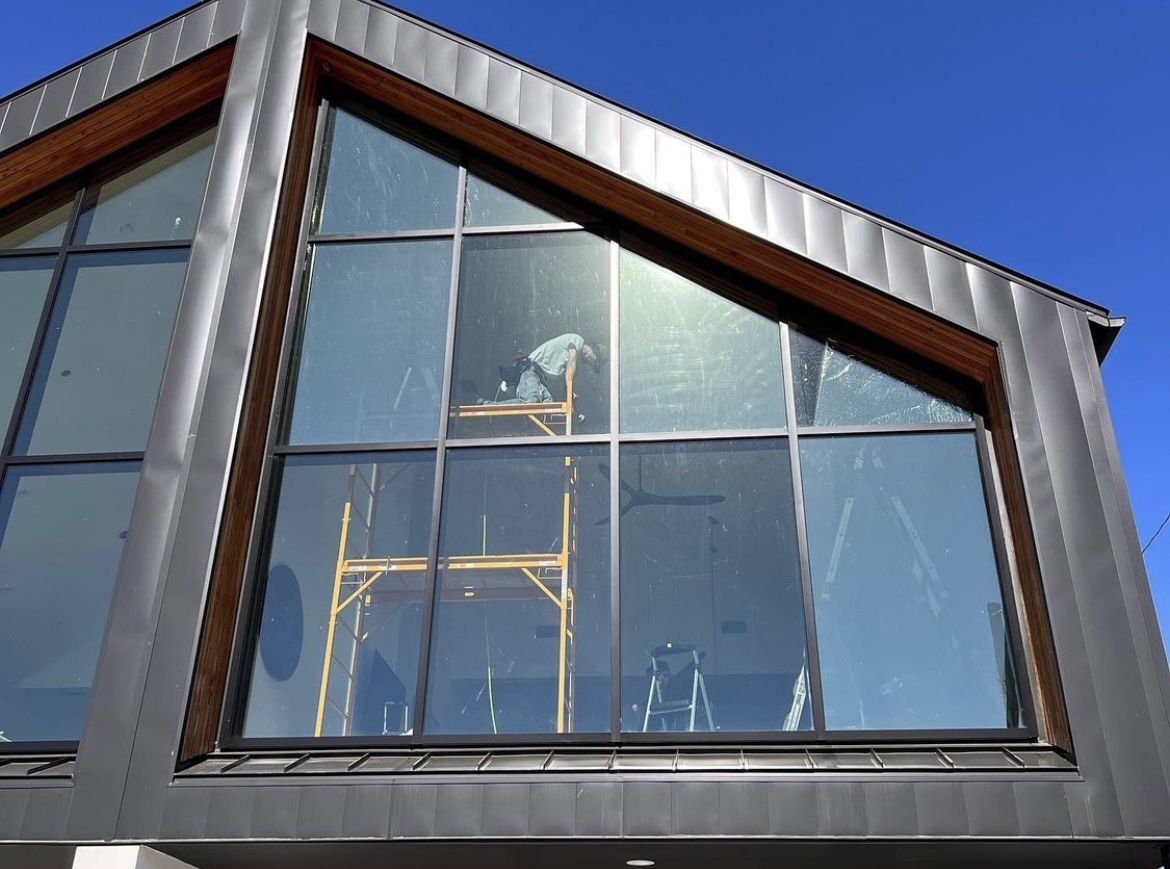Get Expert Advice on Picking the most effective Residential Window Tint for Your Requirements
Get Expert Advice on Picking the most effective Residential Window Tint for Your Requirements
Blog Article
How Residential Window Tinting Improves Your Home's Energy Efficiency
Residential window tinting offers an engaging option for house owners seeking to improve power effectiveness within their living rooms. By using specialized movies to windows, it effectively reduces warm transfer, thus maintaining indoor temperatures and minimizing the requirement for excessive home heating or cooling.
Understanding Window Tinting
Comprehending window tinting is crucial for property owners looking for to boost both convenience and energy effectiveness in their space. Residential Window Tint. Window tinting involves the application of a thin film to the inside or exterior surface of glass home windows. This movie can dramatically regulate the quantity of sunshine and warm that enters a home, therefore influencing indoor climate conditions
There are numerous sorts of home window tinting movies available, each with distinct buildings. For example, dyed films take in solar energy, while reflective movies deflect it away from the glass surface area. Ceramic movies supply a balance of visibility and heat rejection, making them a prominent option amongst homeowners. The effectiveness of window tinting is often determined by its Visible Light Transmission (VLT) percent, which indicates how much light can go through the film.
Benefits of Energy Performance
Window tinting not only enhances visual appeals yet also plays a considerable role in enhancing power efficiency within domestic rooms. By reducing warm transfer via windows, tinted movies develop a more stable interior climate, which can bring about considerable decreases in energy intake for heating & cooling. This energy performance equates right into lower energy costs, providing home owners with substantial lasting cost savings.

Furthermore, window tinting improves the convenience of living rooms. By lessening glare and obstructing harmful UV rays, tinted home windows create a more enjoyable atmosphere, which can bring about improved health for occupants. The protection versus UV rays additionally assists protect furniture and floor covering from fading, adding to the long life of home items.
Exactly How Tinting Functions
Tinting films run via a combination of advanced materials and innovations designed to regulate the quantity of solar energy going into a home. Largely composed of polyester, these films frequently incorporate ceramic or metallic particles that reflect and absorb heat. This double capacity allows them to substantially minimize the infiltration of ultraviolet (UV) rays and infrared radiation while allowing noticeable light to travel through.
The performance of home window tinting is determined by its solar heat gain coefficient (SHGC), which indicates just how much solar energy is transferred through the home window. Lower SHGC worths are more suitable as they signify higher warm being rejected. In addition, home window tints can include a variety of tones, enabling homeowners to customize their visual preferences while improving power effectiveness.
In from this source addition, these films serve as an obstacle, preventing heat loss during cooler months by mirroring indoor warmth back into the space. This thermal insulation impact matches the cooling benefits gotten during warmer months, contributing to a balanced interior climate year-round. By handling solar power properly, property home window tinting not just boosts comfort yet additionally plays a crucial duty in minimizing energy usage and reducing energy costs.
Selecting the Right Tint

There are numerous kinds of window movies offered, consisting of dyed, metalized, and ceramic. Ceramic films supply exceptional warmth control without jeopardizing visibility and are extremely long lasting, making them a prominent option.
Noticeable light transmission (VLT) is one more crucial factor, as it indicates the amount of all-natural light that can go through the tinted glass. Homeowners must pick a color with a VLT that matches their lighting choices while still supplying sufficient glare decrease.
Additionally, examining the solar find here warm gain coefficient (SHGC) can help figure out exactly how well a tint can obstruct warmth from sunshine. A lower SHGC indicates better warm control, inevitably enhancing power performance.
Setup and Maintenance Tips
Correct installation and maintenance are essential elements in optimizing the advantages of residential window tinting. Specialists likewise make use of specialized methods and devices, which can enhance the sturdiness and efficiency of the color.
Adhering to setup, upkeep is vital to extend the life of the home window movie. It is suggested to wait at least 30 days before cleaning the tinted windows to allow the sticky to treat completely.
In addition, regular inspections are advantageous. Inspect for any kind of peeling or bubbling, which can show incorrect installment or wear in time - Residential Window Tint. Resolving these concerns promptly can protect against additional damage and keep power efficiency. By sticking to these installment and upkeep suggestions, house owners can ensure their window tinting continues to offer significant power cost savings and convenience for several years to come.
Final Thought
In final thought, household window tinting serves as a reliable option for improving energy effectiveness within homes. By decreasing warm transfer and blocking harmful UV rays, window films contribute to lower energy intake and boosted indoor comfort.
Window tinting entails the application of a slim movie to the inside or outside surface area of glass windows. By minimizing warmth transfer through home windows, tinted movies develop an extra secure indoor environment, which can lead to considerable decreases in power intake for home heating and cooling.The effectiveness of Read Full Article window tinting is measured by its solar heat gain coefficient (SHGC), which shows how much solar power is sent through the window. By managing solar power properly, household window tinting not just boosts comfort however also plays a crucial function in lowering power consumption and reducing energy costs.
By minimizing warm transfer and blocking unsafe UV rays, window films add to decrease power intake and enhanced interior convenience.
Report this page